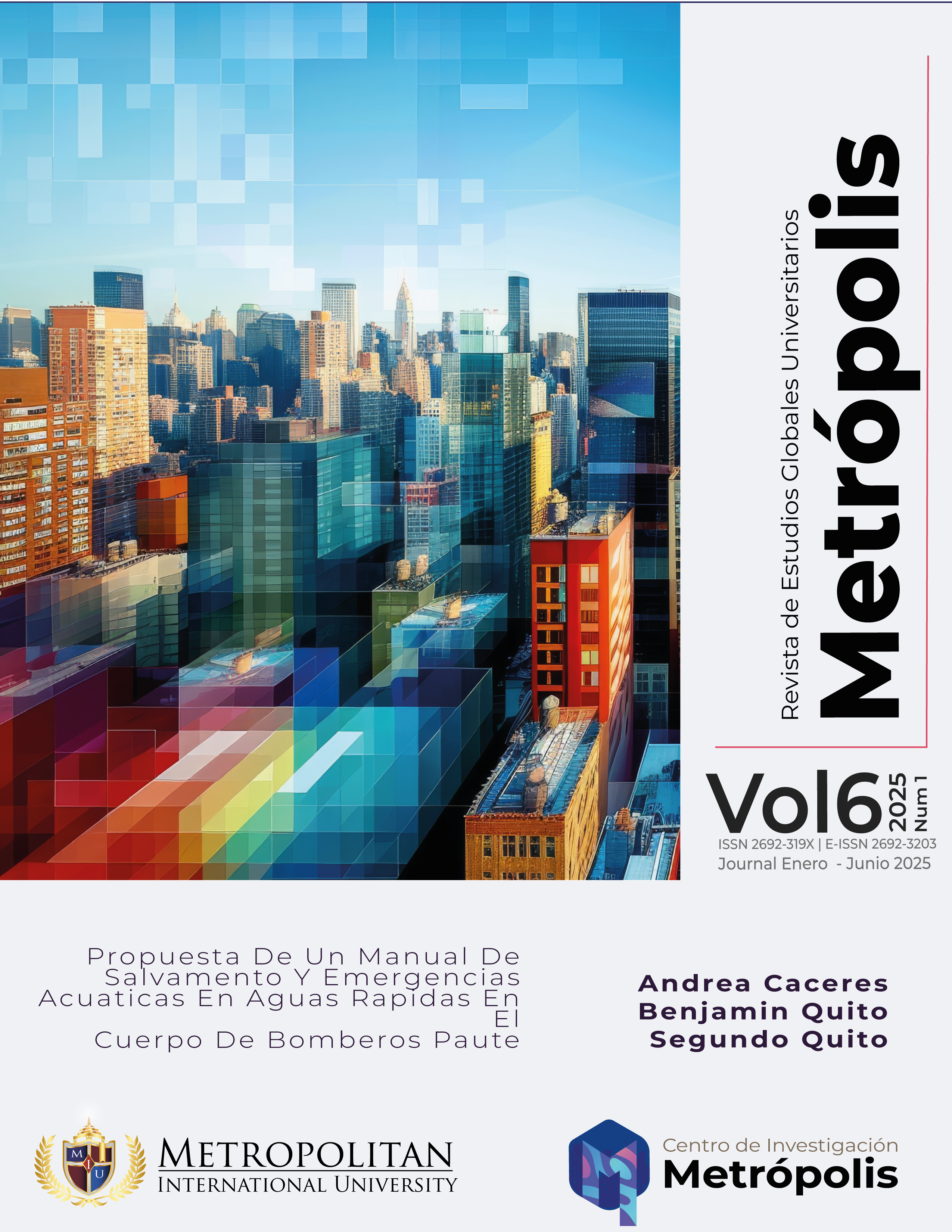Proposal for a manual rescue and aquatic emergencies in fast water in the Paute fire corporation
Keywords:
Aquatic rescue, Firefighters, Risks, Techniques, EmergenciesAbstract
The work of first responders, such as firefighters, requires a solid operational structure to efficiently and safely handle emergencies. As a team, they must possess the same knowledge and skills to address and manage every scenario. Each action must be based on protocols, regulations, and guidelines to ensure compliance with legal requirements and best practices in emergency response. By implementing a qualitative methodology in this article, an exchange of ideas from various authors was conducted. This approach allows for a better understanding of how rescuers perceive and react to emergencies, facilitating the design of more effective training programs. Including testimonies, interviews, and critical decision analyses provides a deeper perspective, continuous feedback, procedural updates based on rescuers’ experiences. Contextualizing the rescue process in this manner makes it a more valuable tool for training professionals in aquatic rescue operations, improving theoretical and practical knowledge. This approach ensures that strategies and protocols remain applicable to emerging situations and evolving operational realities, optimizing safety and efficiency in rescue procedures. Additionally, it aligns with the personal judgment and andragogical thinking of each institutional member, enhancing their ability to make informed decisions in high-risk environments. It is concluded that, based on variables present in rivers, the rescuer must ensure self-rescue, prioritize team safety, and analyze factors such as currents, depth, obstacles, and risks. Regardless of the victim’s condition, the rescuer must maneuver analytically and systematically. A structured approach guarantees effective interventions, minimizes risks, and enhances response efficiency in aquatic rescues, ensuring the best outcome in situations

Downloads
Published
How to Cite
Issue
Section
License

This work is licensed under a Creative Commons Attribution-NonCommercial-ShareAlike 4.0 International License.



